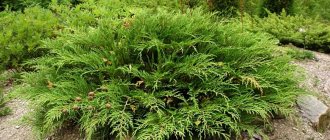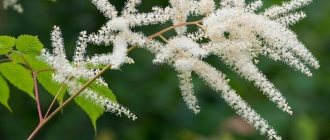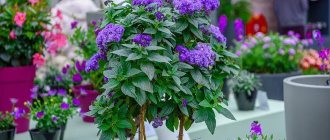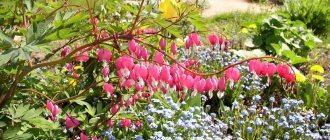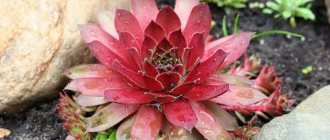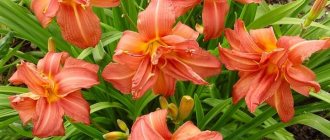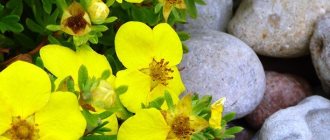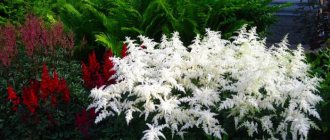Plants with a magnificent appearance, emitting a delicate aroma, have always been in the field of view of amateur gardeners. It’s so nice when home flower beds are filled with fragrant flowers. The heliotrope flower is one of the brightest representatives of the Borachnikov family, which fills the garden with a pleasant, delicate aroma of vanilla. Its, at first glance, strange name translated from ancient Greek means “turning after the sun.” This is due to the fact that the flower inflorescences tend to turn towards the sun during the day, steadily following its movement across the sky. The flower is widespread in countries with tropical, subtropical, and temperate climates. Some representatives of the species contain toxic substances that affect the human nervous system.
Description and properties of the plant
A distinctive feature of heliotrope is its lush flowering in the summer months, the ability of flowers to rotate after the sun and a pronounced vanilla aroma.
In the botanical classification, the plant is classified as a member of the Borage family. Genus Heliotropium (Heliotropes).
Gardeners may find in it similarities with phlox - the same small five-petaled flowers, collected in corymbs with a diameter of up to 25 centimeters. The shoots are gray-green, pubescent. Each one contains up to 5-8 shields. The more there are, the more magnificent and luxurious the bush blooms.
In the botanical description of heliotrope, there are low-growing - up to 20 cm in height and tall - up to 60 cm shrubs. There are more than 300 species in total. It is native to the countries of the Mediterranean basin, Asia, and South America. In countries with cold winters, the heliotrope flower is grown as an annual in open ground, in flowerpots, placed in the garden, and also at home to decorate balconies and terraces.
Not only the inflorescences, but also the green mass are of decorative value. The leaves of heliotrope are large, obovate in shape. The front surface has a pronounced central vein, from which small veins extend, creating a wavy relief. The leaves have slight pubescence.
Flowering is long lasting. New shields appear from June until the first cold weather, and the bush is decorated with beautiful flowers throughout the summer. The photo of these flowers is striking in its unusualness. In addition to the fact that they turn to follow the sun's rays, the plant also has a less romantic property.
The buds and leaves of heliotrope are poisonous, so you need to limit children's access to them.
The raw materials are used in medicine for the production of anthelmintic drugs, the fight against ringworm and warts.
What are the benefits of poisonous plants, read here.
Types and varieties with photos
Among the huge number of varieties, the most interesting, decorative varieties are adapted for cultivation in garden conditions. They are traditionally planted as annuals in central Russia. Among the adapted species:
- Heliotrope sea breeze is a low-growing shrub with herbaceous shoots and oval, pubescent dark green leaves. Flowering at the “sea breeze” is active from May to September. The flowers are purple-violet, with up to 10 corymbs in an inflorescence. Marine heliotrope looks great in tubs and flower beds. In southern latitudes, for example in Crimea or on the Black Sea coast of the Krasnodar Territory, it can be grown as a perennial, covering it with lutrasiliom for the winter.
- Heliotrope Odysseus - five-petalled flowers are located tightly to each other, creating a large, beautiful purple umbrella. An aroma similar to an orchid or gardenia spreads throughout the garden. Bush up to 30 centimeters high, boat-shaped leaves with a strongly wavy surface.
- Heliotrope Marina is a compact plant with an inflorescence of blue flowers. During flowering, the umbrella reaches a diameter of 15 centimeters, the buds are small, tightly planted to each other. Heliotrope Marina, as in the photo, can be planted in an alpine hill or created a beautiful border from several copies.
Photos of heliotrope will suggest planting options in the garden. The plant is universal, compact, so there is always a place for it even in a small area. Species and varieties that are correctly selected according to the size and color of the buds go well with yellow, red, and white flowers. Therefore, do not miss the opportunity to buy different plants and grow no less amazing varieties of heliotrope on your site.
Hybrid heliotropium hibridium
A product of breeders' work, bred specifically for cultivation in open ground.
It grows well in the garden in shaded areas; for lush flowering, a few hours of maximum illumination are enough.
The leaves are small, dark green, pubescent, oval in shape. Varieties with descriptions of purple and lilac flowers are common and are often found on the Internet; blue buds are less common.
Tree or Peruvian heliotropium peruvianum
It is most often grown at gardeners' dachas from the south of Russia to Siberia. A very unpretentious species, although it comes from Peru.
Peruvian heliotrope has a strong vanilla aroma.
Experienced flower growers plant it closer to the house or gazebo, as the flower smell repels mosquitoes well. Tree heliotrope can be grown as a perennial if you cut off all the shoots in the winter and cover the bush with lutrasil, spruce branches or other material. The appearance of the inflorescences and leaf blades resembles garden hydrangea. Blooms in mid-summer, the color of the inflorescences ranges from rich lavender to white.
European heliotropium europaeum
The leaves are pale green with a bluish bloom, pubescent, small in size, ovoid-oval in shape. The bush is compact, height no more than 30 centimeters. Flowering occurs in the apical whorls. European heliotrope bud color is white. It is easy to distinguish it from other varieties - the cores of the five-petal flowers are yellow.
Hairy fruit heliotropium dasycarpum
In the description of heliotropes, this species stands apart. It has highly branched shoots, so it requires more space for planting. Flowers are formed not in an umbrella or shield, but in a spikelet. It is covered with white or lilac small inflorescences.
Varietal diversity of heliotrope
The tree heliotrope flower (Heliotropium arborescens), also called Peruvian, has become widespread. The height of the bush reaches 60 cm, has a flat, dense crown, abundantly decorated with bright foliage. The diameter of the inflorescences is about 15 centimeters. The flowers are deep blue or purple.
Tree heliotrope (Heliotropium arborescens)
Thanks to selection, this species has become the ancestor of many plant varieties that take root well in our climate zone. Of these, the most decorative ones are:
- Mini Marine. It has a miniature bush shape, the height of which reaches 35 centimeters. The flowers are violet-blue, the leaf blades are dark green.
- Black Beauty. The bush grows up to 0.4 meters and has a compact shape. During the flowering period, it is decorated with a large number of purple inflorescences, which have a light, pleasant aroma.
- Fragrant Delight. The height of the bush reaches 0.4 m. It is distinguished by unusual flowering. The centers of the flowers are painted a soft lavender color, which becomes a more saturated shade towards the edges of the petals.
Among the dwarf varieties, it is worth noting the heliotrope flower Regal Dwarf, the height of the shoots of which does not exceed 0.3 meters, the inflorescences have a dark blue color and exude a pleasant, light aroma.
Features of growing at home
Despite its exotic origin, growing a flower is not difficult. It is important to observe watering conditions and temperature conditions. The Peruvian species is most often found in gardens. It is most adapted to the weather conditions of the Middle Zone. This variety of heliotrope is also grown at home to decorate balconies and loggias. Can be planted in flowerpots and tubs and placed on the terrace or in the garden.
A catalog of indoor plants with photos and names can be found here.
Choosing a place for a flower bed
Heliotrope is a light-loving flower, so it will feel best in the most illuminated areas. Of course, it can be planted in partial shade. But due to lack of light, the shoots of the plant will become very elongated. In addition, the shrub produces fewer flower stalks, and the color of the petals will noticeably fade. But in partial shade, the buds stay on the stems longer.
As for the soil, an area with fertile, breathable soil, deep groundwater and a neutral reaction would be ideal for heliotrope. Moreover, it is advisable to plant the flower on a hill, because it categorically does not tolerate lowland.
If the soil on the site is too heavy, be sure to “lighten” the soil before planting. To do this, add compost, humus, peat or sand to the ground. Otherwise, the flower will develop poorly, which will negatively affect its decorative effect.
Reproduction
There is nothing easier than propagating this fragrant plant at home. Heliotropes can be grown from seeds or new young specimens can be obtained by cuttings.
Seeds
Planting seeds is the longest and most difficult method, requiring careful attention to the seedlings. Before sowing, the seed material is kept in a cool place for several days, for example, on the refrigerator door.
The soil should be loose; most of it is rotted compost.
If a purchased soil mixture is used, it must be diluted with sand and peat.
When planting, the seeds are not covered with soil, but are slightly buried in the soil. Germination is poor, sprouts appear unevenly after 3-4 weeks. As soon as they grow up, they are picked into separate cups. And when 4-5 leaves appear, pinch the top so that the plant bushes better. Heliotropes from seeds are planted in the ground in mid-May.
Cuttings
As soon as the plant finishes flowering, it is transferred to a room with a low air temperature - no higher than +12 degrees. It should be kept in such conditions throughout the winter. No special care is required; it is enough to water it occasionally so that the earthen ball does not dry out completely.
In March, cuttings are taken from strong shoots. They are kept in a growth stimulator for 2-3 days, and then rooted in a mixture of peat and humus. It is advisable to organize a “greenhouse” by covering the entire planting with film or each individual specimen with a glass jar.
Watering and regular ventilation are mandatory conditions for growing at home.
In May, the overgrown cuttings are planted in fertile soil. Heliotrope will produce flowers in mid-June.
When is the best time to plant heliotrope seedlings in 2022
The period of development of heliotrope seedlings is quite long (after the first shoots it takes about 80-110 days before flowering). Therefore, it is important to observe the sowing time in order to have time to enjoy the flowering in full.
The optimal time for sowing heliotrope for seedlings: late February, early March. If you have the opportunity to supplement the seedlings with phytolamps, then you can plant the seeds in January or early February.
By the way, you can choose the time for planting seeds using the Lunar calendar 2022:
- Favorable days: in January: 1, 10, 11, 15, 16, 19, 20;
- in February: 7, 8, 12, 13, 14, 15;
- in March: 10, 11, 15, 20, 21, 24, 25.
- Unfavorable days: in January: 2, 18th;
- in February: 1, 16;
- in March: 2, 16, 17, 18, 31.
Growing and care
Regardless of whether you are going to grow heliotrope in the garden or have purchased seedlings for balcony gardening, the care conditions are almost the same. The main thing is that the plant has enough space, light, and watering is carried out regularly. Proper cultivation of heliotrope at home will ensure flowering even in winter. In the summer, the pot with the crop can be taken out into the garden, and with the onset of cold weather, brought back into the house. A few tips from experienced gardeners on how to grow heliotrope will help you avoid making the most common mistakes.
The soil
To plant heliotrope, you will need loose, fertile soil. The plant does not like stagnant moisture, so heavy soil is not suitable for growing it. It is not enough to buy soil mixture in the store. It will have to be diluted with sand. Adding humus is useful. For growing at home, the soil should consist of turf and garden soil with the addition of river sand and a small amount of leaf compost.
Drainage from expanded clay or clay shards is required.
Temperature
The heliotrope plant easily tolerates both coolness and summer heat, but in the midday heat it is better to protect it from the sun's rays. Otherwise, the delicate leaves of the crop will be scorched and unsightly brown spots will appear.
Bushes grown from seeds at home feel good at a temperature of +20-+22 degrees. For wintering and subsequent transplantation into open ground, the thermometer in the room should not show more than +12.
Watering
During the period of active growing season and bud formation, the crop needs regular, abundant watering at least 2-3 times a week. Do not allow the earthen ball to dry out completely. A weak root system of thin roots quickly dries out and the plant will die.
Fertilizer
Complex mineral fertilizers are suitable.
Pay attention to the composition indicated on the packaging. Nitrogen should not come first in it. If there is too much of it, green mass builds up, and flowering is either faded and inexpressive, or does not occur at all.
The best option is organic. Fill the compost with water and leave for a day. Drain the liquid and water the bush every two weeks.
Trimming
Removing weak shoots will help the plant look fuller. Faded inflorescences should also be trimmed. They do not look aesthetically pleasing and draw strength from the plant. Pruning is carried out as necessary to form a beautiful bush shape.
Transfer
When growing at home, potted heliotropes are transplanted in the fall, after the plant has completely bloomed. To do this, the plant is completely removed from the pot, the drainage and soil are replaced, and it is planted in a larger pot.
Transplantation into open ground is carried out in May-June, when the likelihood of frost has passed. The planting hole should be at least 30-50 cm deep. Fine crushed stone or any other drainage must be placed at the bottom, and a layer of sand of 5-7 centimeters is poured. The ground around the bush is sprinkled with sawdust to retain moisture in the top layer longer.
Wintering
After digging up a bush from the garden, transplant it into a pot or box and place it in a cool, well-lit room. The ideal option is an insulated loggia.
Wintering in the garden requires more careful preparation. All shoots of heliotrope are cut off, leaving only branches sticking out 5-7 centimeters. They are covered with sawdust, covered with spruce branches and lutrasil so that the bush does not freeze.
It is not advisable to leave heliotropes grown in Siberia and other regions with cold winters in open ground for the winter.
Diseases and pests
If not properly cared for, exotic plants grown both indoors and in the garden become infected with fungal diseases and are attacked by pests. The most common disease of heliotrope is gray rot. It appears if gardeners neglect preventive pruning of peduncles and shoots and use too much watering.
Whiteflies and aphids cause damage to bushes. Various flies, attracted by the aroma of the plant, lay eggs on the inside of the leaves. Gluttonous larvae gradually emerge from them, capable of destroying heliotrope completely. Experienced gardeners recommend fighting pests with the help of insecticides.
How to water a sunny flower
Heliotrope equally does not tolerate prolonged drought and excessive moisture, so you need to be extremely careful when watering the flowerbed. Moisten the soil when the top layer dries slightly, but do not use too much water, as this will cause rotting of the roots. In general, keep an eye on the weather and keep the soil slightly moist, but not wet.
The plant responds well to sprinkling. Carry out this activity in the morning or evening, otherwise the delicate foliage will get burned. For spraying, use exclusively warm water, heated by the sun's rays during the day.
Use in the garden
Planting and caring for heliotrope in open ground differs little from keeping the plant indoors. Regardless of whether you grew heliotrope from seeds or bought mature specimens in a greenhouse, a healthy appearance of the plant will be ensured by:
- regular watering;
- good drainage;
- quality soil composition;
- pruning;
- feeding;
- pest control.
This exotic plant is capable of revealing all its real attractiveness in an open space next to aquilegia, delphinium and saxifrage. Bushes are used to create flowering fields and borders, and complement them with ridges and alpine slides. These flowers make great photos for magazines. Experienced gardeners even form a miniature tree from a bush using proper pruning of shoots.
The advantages of heliotrope in landscape design cannot be underestimated. Bright lilac, violet and lilac flowers harmoniously combine with pink, white buds of lavatera and other crops, as well as with herbaceous plants of any color.
See also:
My Heliotrope
The third summer pleases me with its flowering and aroma of Heliotrope.
I grew it from seeds. See post: https://www.asienda.ru/post/32862/]Heliotrope will bloom again in my garden!
For two winters I lived on a window far from the radiator. After returning from the dacha, I still tried to bloom, but due to lack of light the flowers
turned pale, shrank and crumbled. The plant fell asleep...
Read more"
| Heliotrope will bloom again in my garden! You can't help but fall in love with Heliotrope! Its modest appearance and pleasant aroma will literally captivate you! They say that it has magical properties and is capable of not only decorating the garden, but also protecting its owner from all sorts of misfortunes... Read more" |
| Culture compatibility Lately, reading the posts of our Haciendos, one thought has been increasingly visible: “Spring is coming, make way for spring!” And I, no different from others, also go through my bags with trembling hands, dreaming of when, where and what I will plant. Yesterday, among other things, my notebook came into my hand... Read more" |
| Heliotrope Heliotrope is popularly known as sun worshiper. Not so long ago it began to lose its relevance, but flower growers managed to restore demand for this crop and interest in it. In floriculture, heliotrope has long been known not only because it has an attractive and elegant aesthetic appearance, but also because of its frequent use in the manufacture of perfumes. The aroma of the plant is close to the smell of vanilla. |
| Annual flowers in the country The choice of annual flowers is huge, growing seedlings is labor-intensive and requires a lot of lighted space. I tried to grow annuals that would later reproduce by self-sowing. These are eschscholzia, godetia, asters, poppies, cornflowers, nigella damascus, nemophila, morning glory, viola. I just uploaded the photo to the album, I’ll try to add to the album... Read more" |


